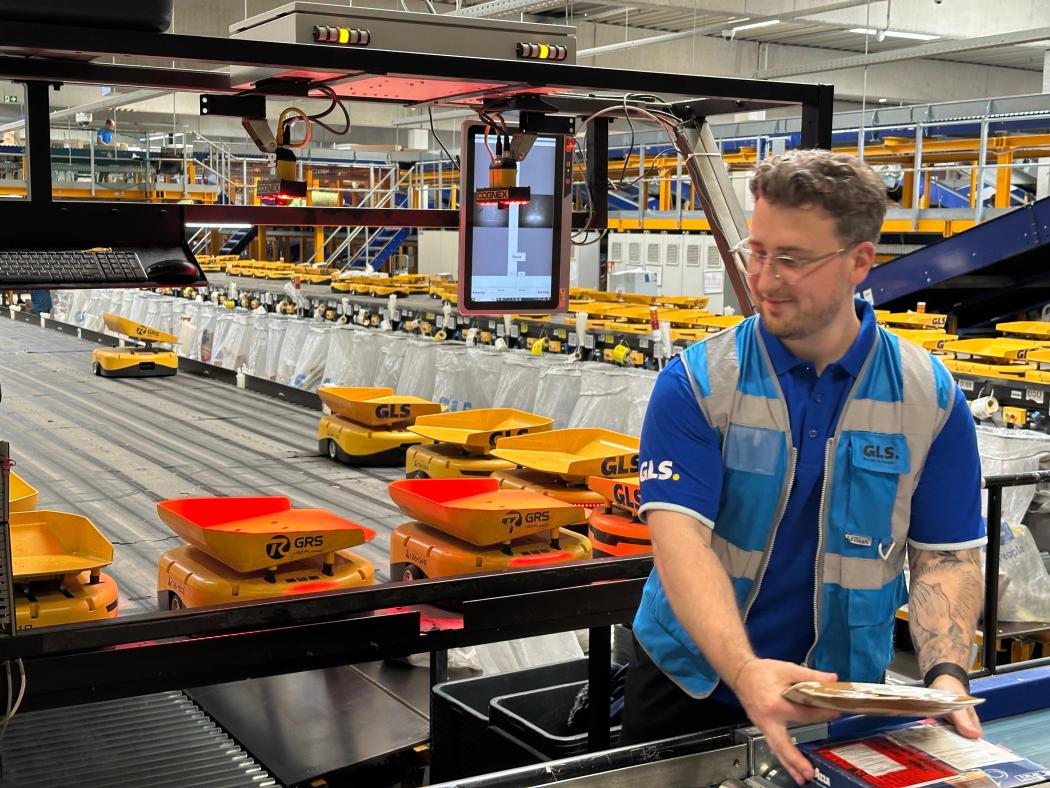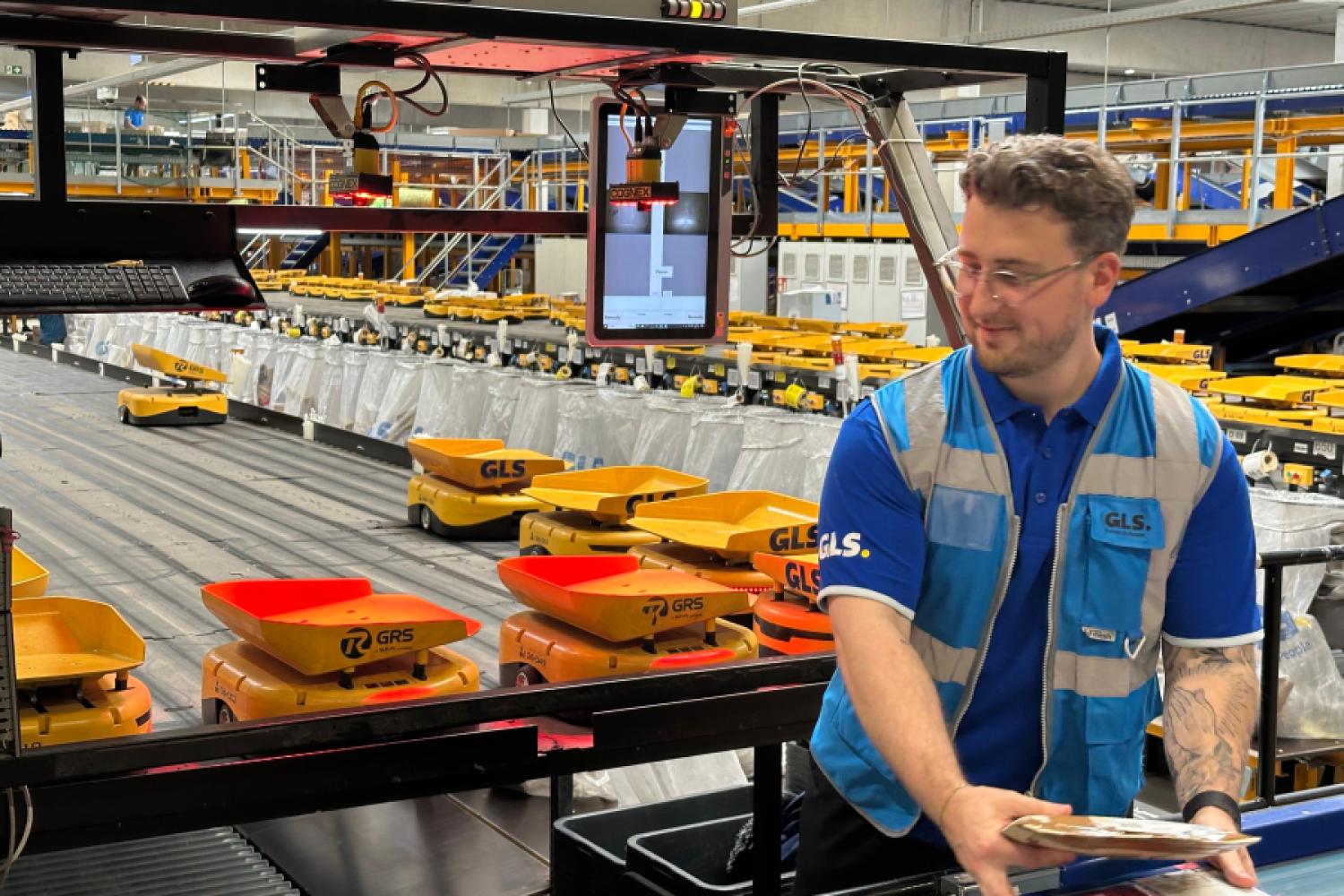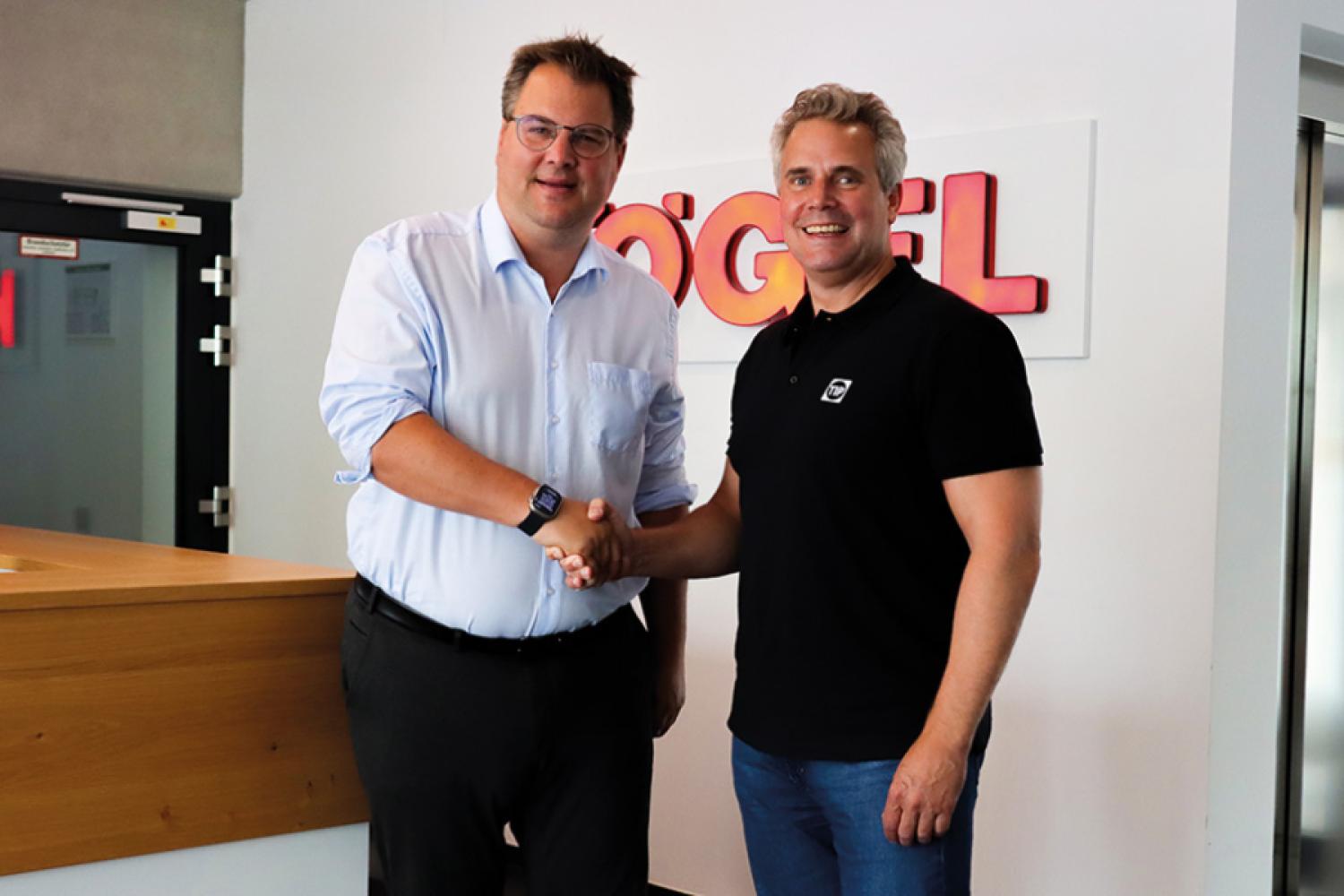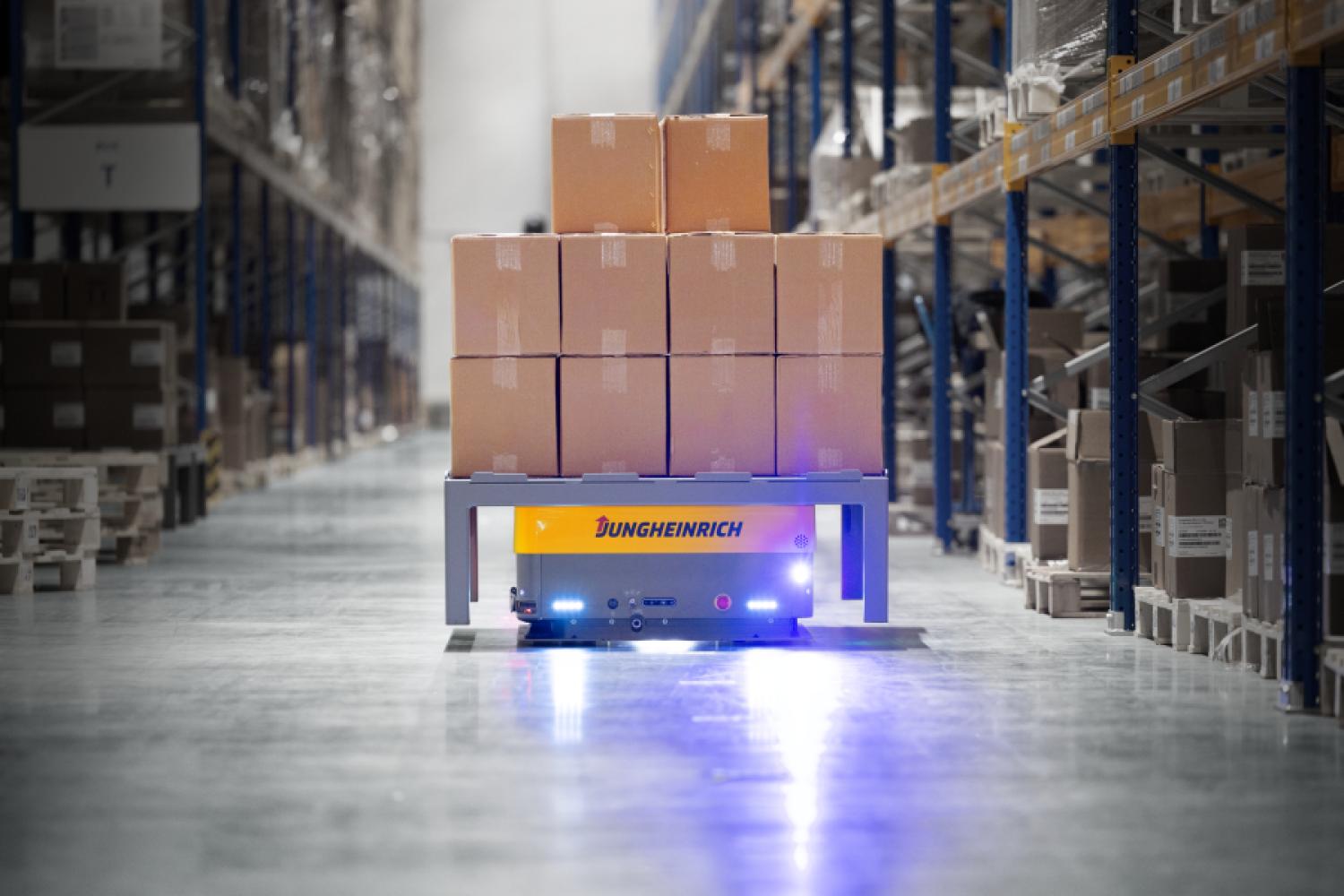In the Bielefeld depot of the parcel service provider GLS Germany, a total of 70 autonomous sorting robots have been in operation since autumn 2023. Since then, the units have permanently taken over the sorting of small parcels.
After completing a multi-month pilot phase, GLS transferred the project to regular operations. The new technology complements the existing sorting system and, according to the company, aims to make processing processes more efficient and higher quality.
According to a press release, the robots used are so-called Automated Guided Vehicles (AGVs) from the manufacturer Libiao Robotics. They handle parcels weighing up to three kilograms and with maximum dimensions of 30×40×15 centimeters.
The process begins with employees manually placing the shipments on the AGVs. Loading occurs at an ergonomically favorable waist height. Subsequently, the robots automatically transport the packages over a U-shaped sorting table and deliver them over
a distance of about 25 meters to their destination points within the depot.
Increase in the number of destination points through intelligent control
The technical innovation enables a significantly higher density of destination points in a limited space, according to the parcel service provider. According to GLS depot manager Sebastian Nord, the new system makes it possible to drive up to 144 destinations instead of the previous 50 destination points. Nord explains:
“With the robots, we can now serve up to 144 destination points in the same area where we previously served 50. This saves valuable time, increases precision, and makes our processes noticeably more efficient.”
At the same time, the use of the devices physically relieves employees, as the sorting work can be made more ergonomic.
The robot swarm is controlled via a WLAN-based software. This coordinates both the routes of the individual
units and their charging cycles. A charging process takes about five minutes, and the robots have a runtime of four to five hours. The number of devices used can be adjusted as needed, allowing for flexible scaling with fluctuating shipment volumes.
Strategic importance and system expansion
The project is part of GLS Germany's overarching digitization and automation strategy. The company explicitly aims to make sorting processes more decentralized and cost-optimized. Especially in times of high shipment volumes, automated systems should contribute to stabilizing operational processes.
GLS plans to introduce the robotic system at additional locations in the current year. The next installations are planned for depots in Dortmund and Neuenstein in eastern Hesse, among others.
In parallel, GLS is developing the next expansion stage of the system. While the robots are currently still being loaded manually, the company is working on a solution for
the automatic loading of the vehicles. This measure is also intended to further automate processes and further reduce the physical burden on employees. Depot manager Sebastian Nord emphasizes:
“Depending on the shipment structure and demand, we can flexibly adjust the number of robots - this is an advantage to reliably operate even during peak times.”
Conclusion and outlook
With the transition of the pilot project to regular operations, GLS Germany is setting a precedent for the consistent use of new technologies in parcel logistics. The integration of autonomous sorting robots is intended not only to shorten processing time but also to increase efficiency in the depots.
At the same time, the company aims to improve working conditions for employees. The introduction at additional locations is imminent, and with the development of automated loading systems, the next step in the automation strategy is already on






